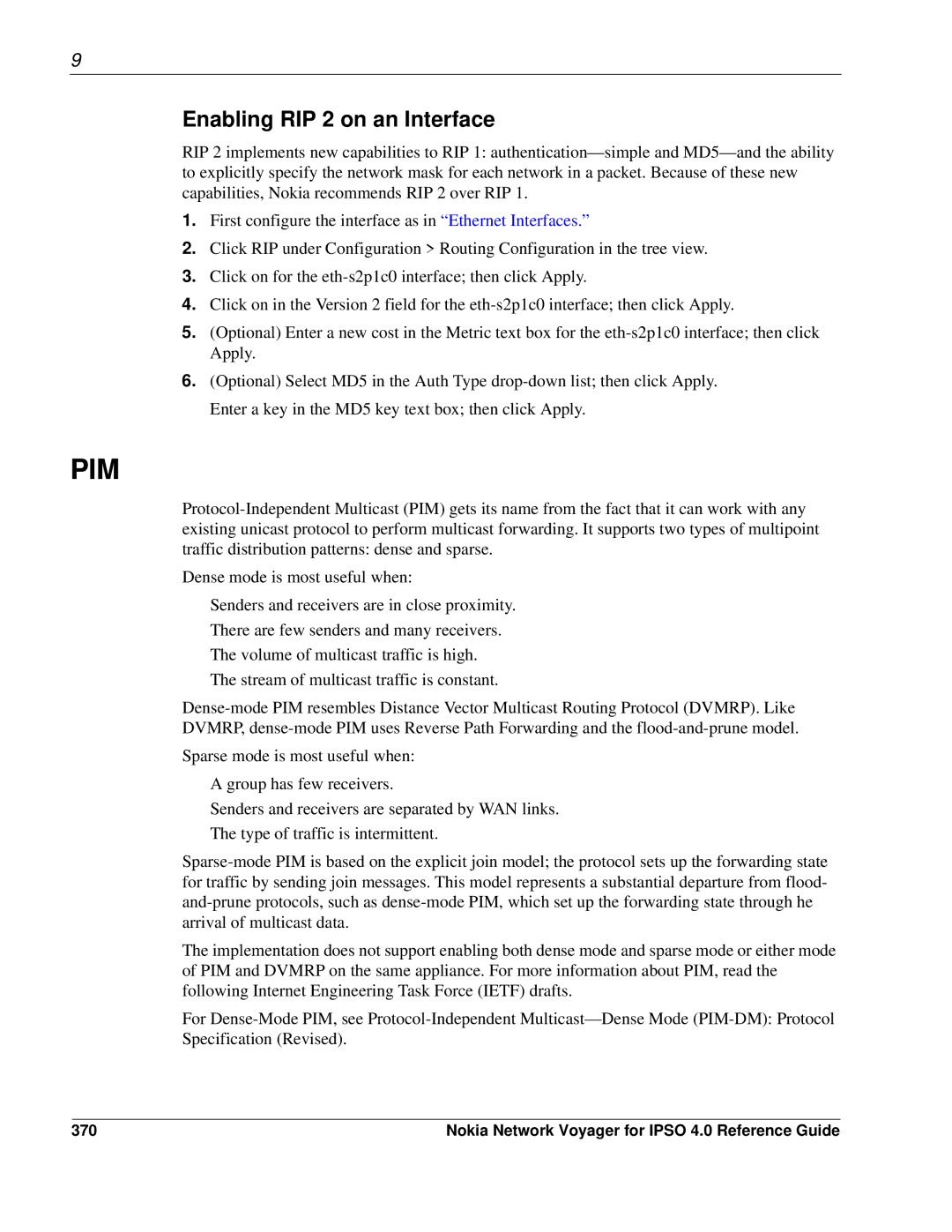
9
Enabling RIP 2 on an Interface
RIP 2 implements new capabilities to RIP 1:
1.First configure the interface as in “Ethernet Interfaces.”
2.Click RIP under Configuration > Routing Configuration in the tree view.
3.Click on for the
4.Click on in the Version 2 field for the
5.(Optional) Enter a new cost in the Metric text box for the
6.(Optional) Select MD5 in the Auth Type
PIM
Dense mode is most useful when:
Senders and receivers are in close proximity.
There are few senders and many receivers.
The volume of multicast traffic is high.
The stream of multicast traffic is constant.
Sparse mode is most useful when:
A group has few receivers.
Senders and receivers are separated by WAN links.
The type of traffic is intermittent.
The implementation does not support enabling both dense mode and sparse mode or either mode of PIM and DVMRP on the same appliance. For more information about PIM, read the following Internet Engineering Task Force (IETF) drafts.
For
370 | Nokia Network Voyager for IPSO 4.0 Reference Guide |
